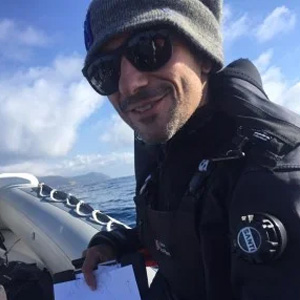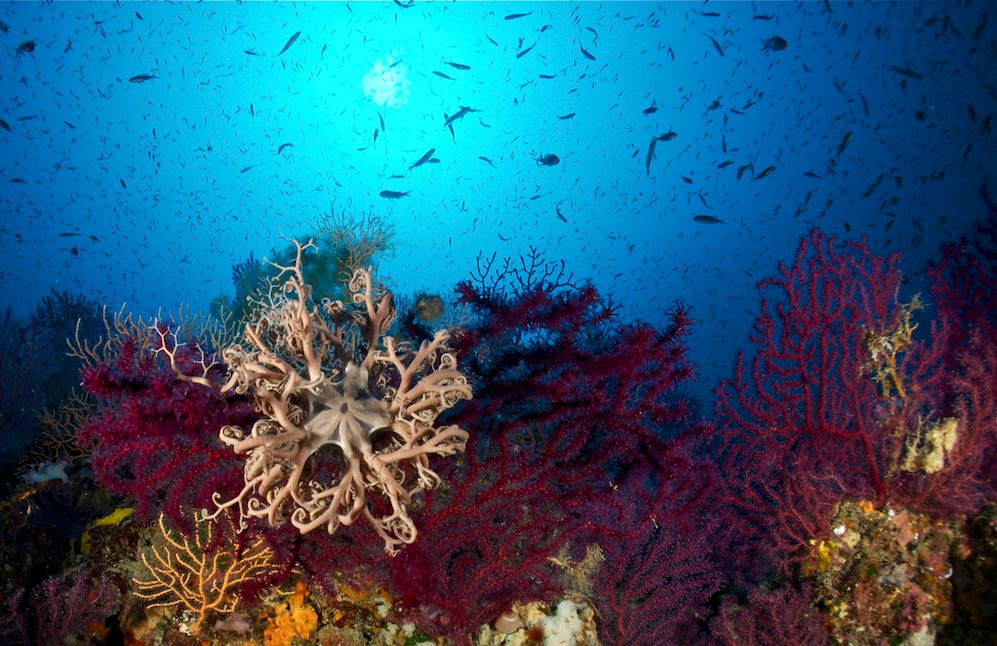
Are you looking for the perfect underwater adventure in one of Italy’s most picturesque landscapes? Then dive in with us to discover the top ten diving locations in Tuscany, where history, nature, and mystery merge beneath the waves of the crystalline sea.
If you’re passionate about diving, get ready to explore some of the most extraordinary dives that Tuscany has to offer.
This region, famous not only for its artistic and cultural heritage, hides beneath the sea surface a fascinating world full of history and marine biodiversity.
From submerged wrecks telling stories of past eras to rocky walls hosting colorful and vibrant fauna, Tuscan diving sites are suitable for divers of all levels.
Here is a guide to the best diving spots in Tuscany, with details on what to expect, the level of difficulty, the necessary equipment, required certifications, and the best times for diving.
1. Secca di mezzo canale
Secca di Mezzo Canale is among the most spectacular dives in the Mediterranean, thanks to its unique and fascinating location. Strategically placed in the heart of the channel that divides the island of Giannutri, the island of Giglio, and the Argentario promontory, this underwater site is close to the 100-meter depth line, an area known for its particular geological formation.
The summit of the shoal, known as the “hat,” is a crucial point for spotting large pelagics. These majestic sea inhabitants, often hunting smaller prey, offer a natural spectacle that attracts divers from all over the world. Moving beyond the bathymetry of 35-40 meters, you enter a realm dominated by large gorgonians and encrusting sponges that take over the bare submarine rocks.
Among the gorgonian fans, starfish rest and varieties of marine life such as bream, groupers, lobsters, and many other typical Mediterranean inhabitants hide. At about 50 meters deep, the experience becomes even more fascinating with unpredictable encounters with large groupers moving among the branches of gerardia savaglia and other invertebrates like melon sea urchins and pencil sea urchins.
- Difficulty level: Intermediate.
- Required certification: Deep Diver.

2. The Nasim II Wreck
The Nasim II Wreck, originally called Llyn, is a captivating dive site located near the island of Giannutri in the Mediterranean.
After several name changes and ownerships, the cargo ship Nasim II sank on February 12, 1976, following a collision with rocks.
Today, the wreck lies on a sandy seabed at about 60 meters deep, tilted on its left side with the bow facing Cala Maestra.
The site, which requires experience in deep diving, offers an exceptional opportunity to explore the transported cars now scattered on the seabed and to observe a rich variety of marine life inhabiting the wreck, making it a must-visit attraction for experienced divers.
- Difficulty level: Advanced.
- Required certification: Deep Diver or equivalent (to reach the cars) – techinical diving (to reach the wreck)
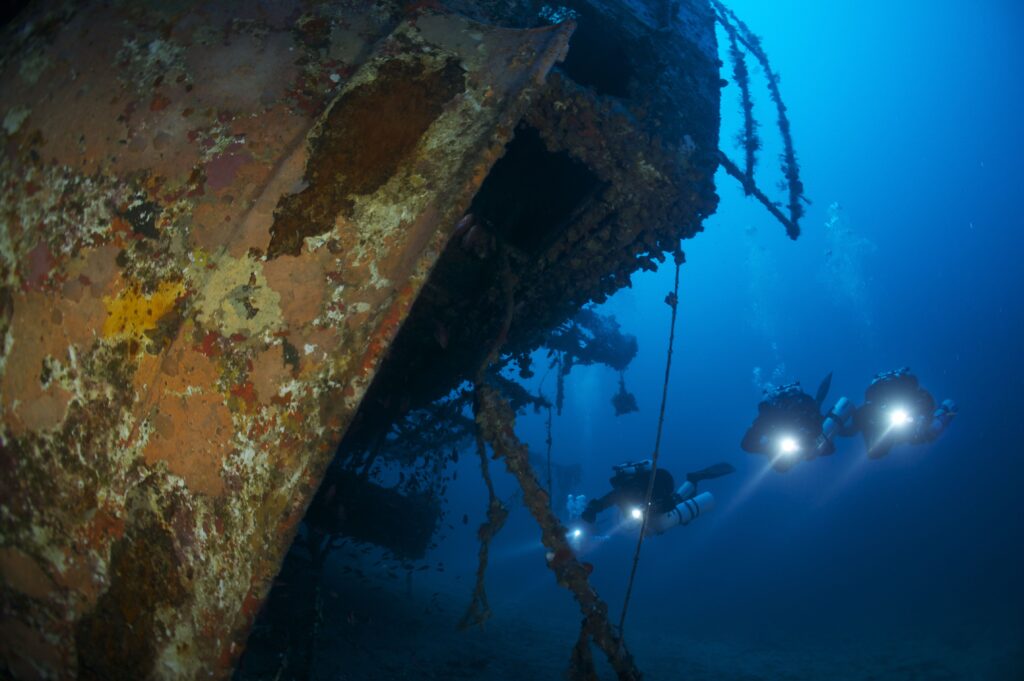
3. Relitto Anna Bianca
The wreck of Anna Bianca, situated between 33 and 52 meters deep on a white sand seabed near the island of Giannutri, offers an engaging diving experience for experienced divers.
The wreck, tilted on the starboard side, shows a well-preserved stern, while the central section is largely destroyed. The bow lies at the maximum depth of 52 meters.
Marine life is abundant around the wreck, with moray eels and red scorpionfish, but also while conger eels, lobsters, and shrimps nestle among the twisted sheets of metal.
The site, rich in history, underwent multiple changes of name and role before sinking in 1971, presumably due to adverse weather conditions, despite local legends suggesting an intentional sinking to claim insurance.
Diving at the wreck of Anna Bianca is recommended only for advanced divers.
- Difficulty level: Advanced.
- Required certification: Deep Diver.
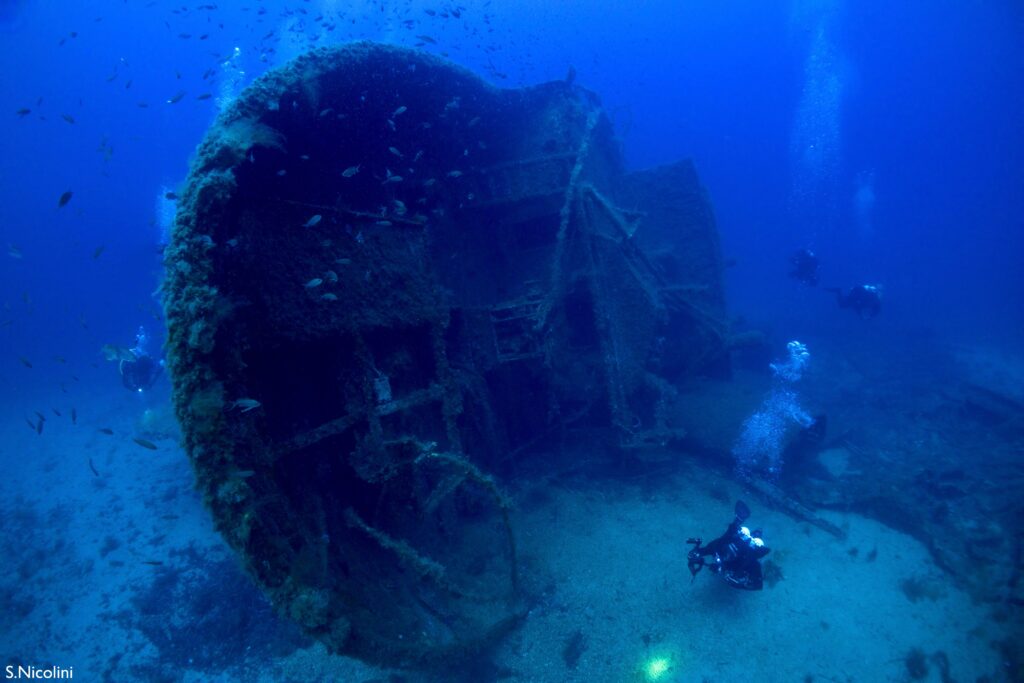
4. Secca di Zi Costante
Secca di Zi Costante, located near the island of Giannutri, is a renowned diving site that stands out for its extraordinary marine biodiversity. The site is characterized by a rocky seabed that drops steeply beyond 90 meters, adorned with a rich covering of colorful gorgonians, sponges, and soft corals.
It is also famous for the cleaning stations frequented by sunfish, where small fish help maintain these giants of the sea clean.
This site is ideal for advanced divers interested in exploring the vibrant and colorful marine life of the Mediterranean.
- Difficulty level: Advanced.
- Required certification: Technical diving.
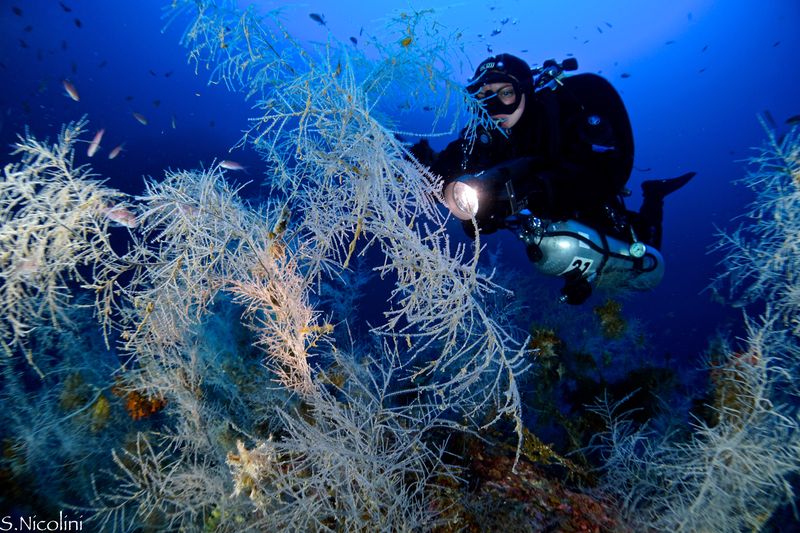
5. Secca Punta Pennello – Giannutri
Secca Punta Pennello at Giannutri is an exceptional diving site known for its rocky walls, caves, and natural cavities. This environment hosts a diversity of marine life, including noble pen shells, barracudas, scorpionfish, dentex, tunas, amberjack, as well as various crustaceans and gorgonians.
A peculiar attraction of the site are the freshwater springs in the caves and the deep Grotta della Venere, where sunfish and black coral can be admired at about 90 meters deep.
The area, boats due to the currents that sometimes can be found there, requires advanced diving skills and offers routes towards Cala Maestra and Punta Ischiaiola. This site offers an exciting underwater experience for experienced divers, enriched by extraordinary marine biodiversity.
- Difficulty level: Advanced.
- Required certification: Technical diving.
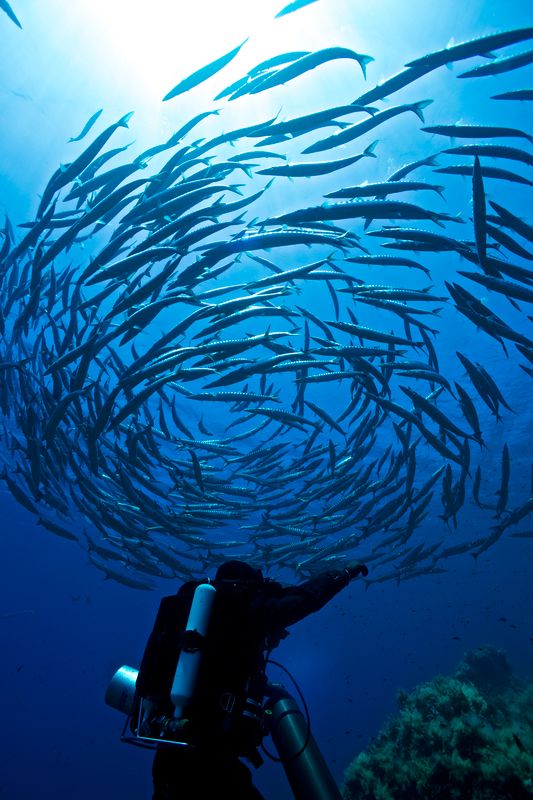
6. Archetti – Giannutri
The Archetti at Giannutri is a diving site accessible to all levels of divers, with depths ranging from 5 to 30 meters. This area is famous for its natural rock formations and the play of light created by the arches and siphons.
The seabed at -15 meters connects the rock structures to the surface, creating a visually striking environment. The biodiversity includes algae of various types, sponges, bryozoans, and fish typical of rocky environments such as bream, moray eels, and small groupers.
For more experienced divers, there is also the opportunity to explore a deeper wall up to -30 meters where lobsters, spiny lobsters, and scorpionfish can be found. Diving at the Archetti offers a rich and memorable underwater experience, with a variety of scenarios and marine species to discover.
- Difficulty level: Easy, with a variety of depths from 5 to 30 meters, making the experience suitable for both beginners and experts.
- Required certification: Open Water Diver.
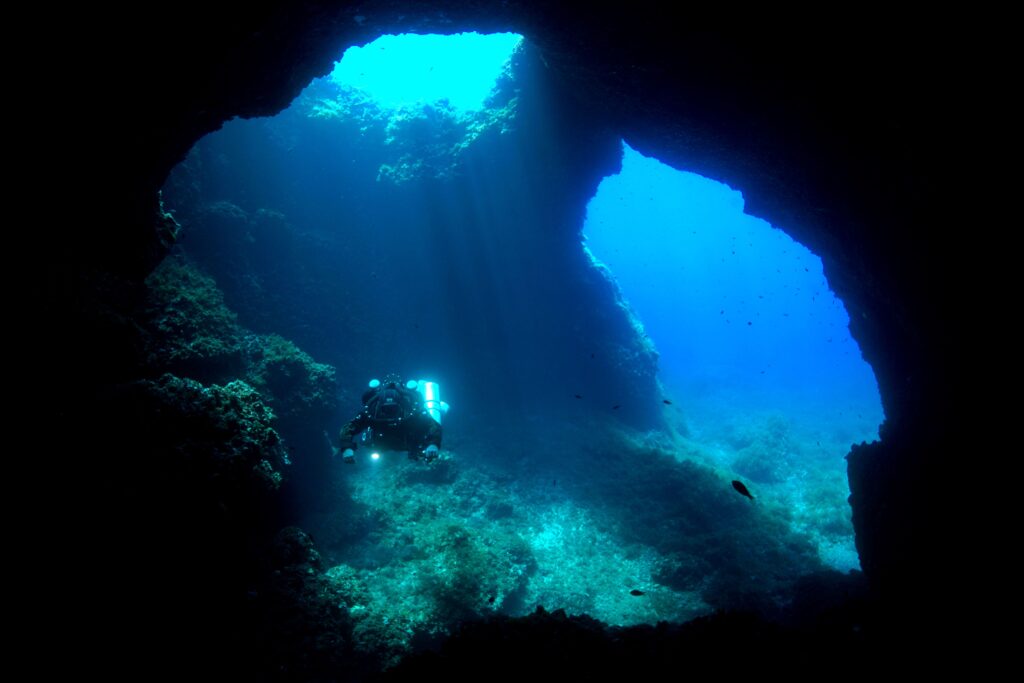
7. Cala dei Santi – Monte Argentario
Cala dei Santi is a renowned diving site along the Argentario coast, known for its wonders both above and below water. Above water, you can explore the historic Grotta dei Santi, famous for its stalactites, stalagmites, and traces of Neanderthal man.
Underwater, the dive follows a landslide of boulders that host many moray eels, together with conger eels, octopuses, and some snappers and barracudas. It is common to spot barracudas. One of the main attractions is the precious red coral, visible at shallow depths.
Cala dei Santi offers an unforgettable experience, combining history, geology, and marine biodiversity, making it ideal for divers of all levels.
- Difficulty level: Easy, with various degrees of complexity making it interesting for both beginners and experts.
- Required certification: Open Water Diver.
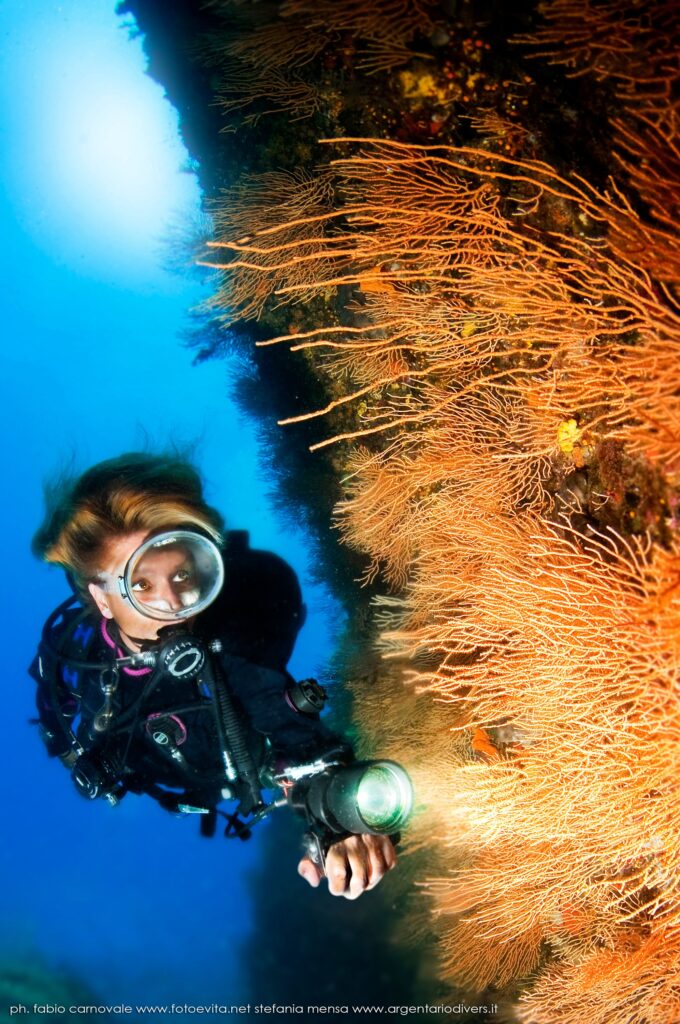
8. Punta San Francesco – Giannutri
Punta San Francesco, located near Zone 1 of the Marine Park of the island of Giannutri, is a renowned diving site on the Island of Giannutri. The colorful wall of the site drops from 30 to over 90 meters, making it ideal for both recreational and technical dives. It is a perfect place to spot barracudas, groupers, scorpionfish, lobsters, and electric rays. The variety and beauty of the marine flora and fauna, along with the possibilities offered for deep dives, make Punta San Francesco a unique and unforgettable underwater experience.
- Difficulty level: Intermediate – Advanced.
- Required certification: Advanced Open Water Diver.
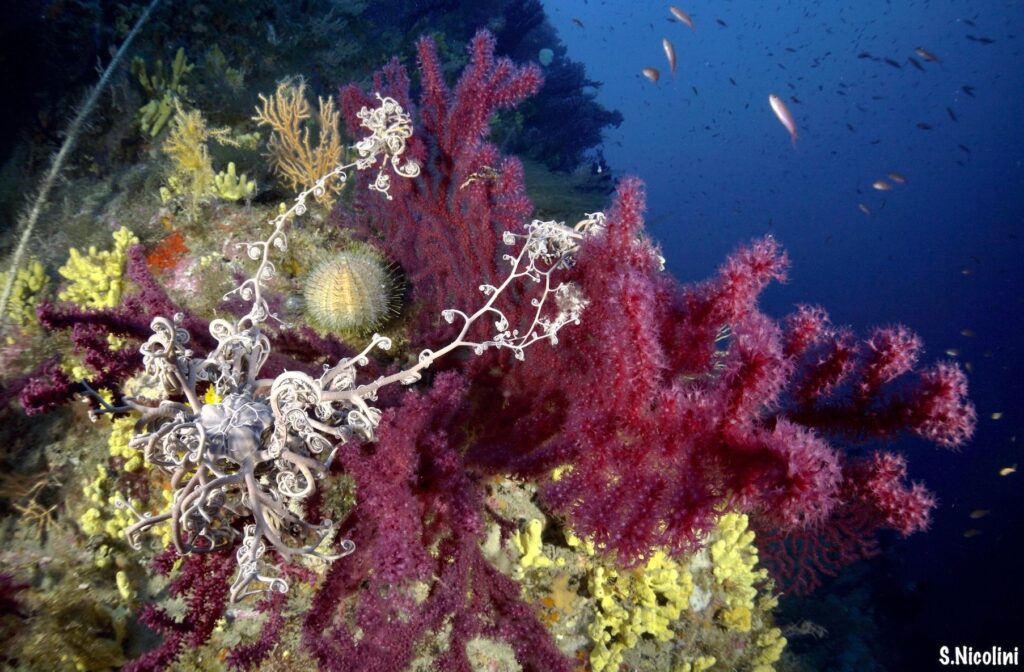
9. Secca della Croce – Giglio
Secca della Croce at Giglio is a diving site suitable for all levels, starting at 5 meters deep and grading down to 15 meters, where there is a wide plateau populated by numerous schools of fish. Continuing, you descend towards walls rich in colorful gorgonians, with dens of lobsters and moray eels. This site offers a combination of accessibility and richness of biodiversity, making it ideal for both beginners and experts seeking underwater adventures and fascinating marine encounters.
Difficulty level: intermediate
Required certification: Open Water Diver.
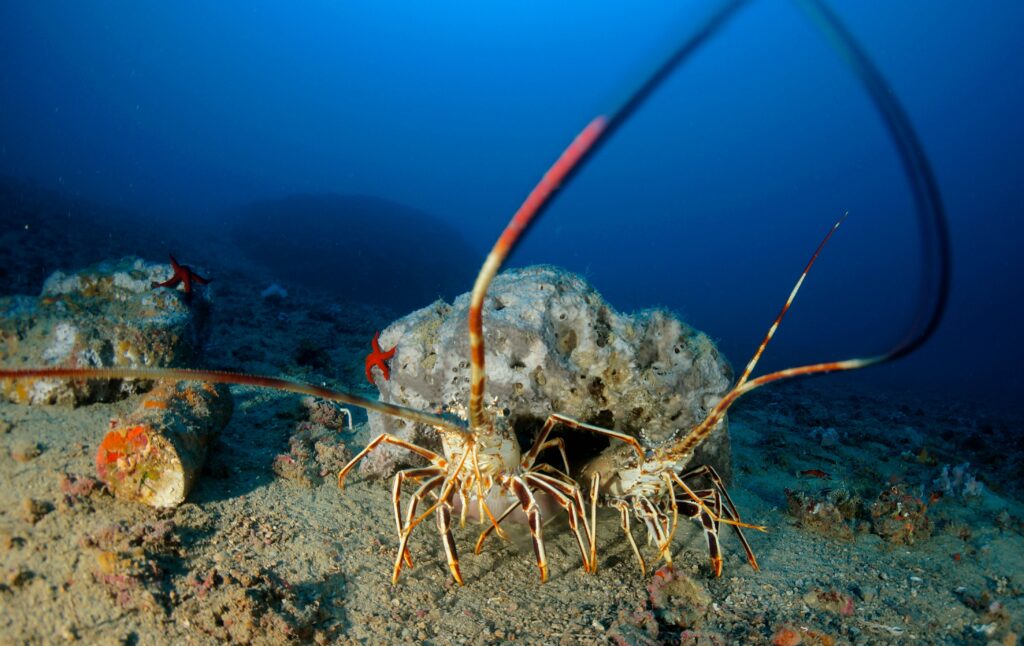
10. Scoglio Sommerso – Argentario
Scoglio Sommerso, near Punta Finestra, is a diving site with the “hat” at 4 meters deep and walls that descend up to 40 meters. The shallower areas are covered with yellow and orange Eunicella Cavolini, while from 16 meters, red gorgonians and corals can be found. It’s easy to spot lobsters, spiny lobsters, scorpionfish, groupers, and moray eels. In the deeper parts, schools of barracuda are often encountered. As you ascend towards the “hat,” you are surrounded by schools of damselfish. The site is also known for the presence of numerous nudibranchs, making it ideal for marine biology enthusiasts and underwater photography.
- Difficulty level: Intermediate – Advanced.
- Required certification: Open Water Diver.
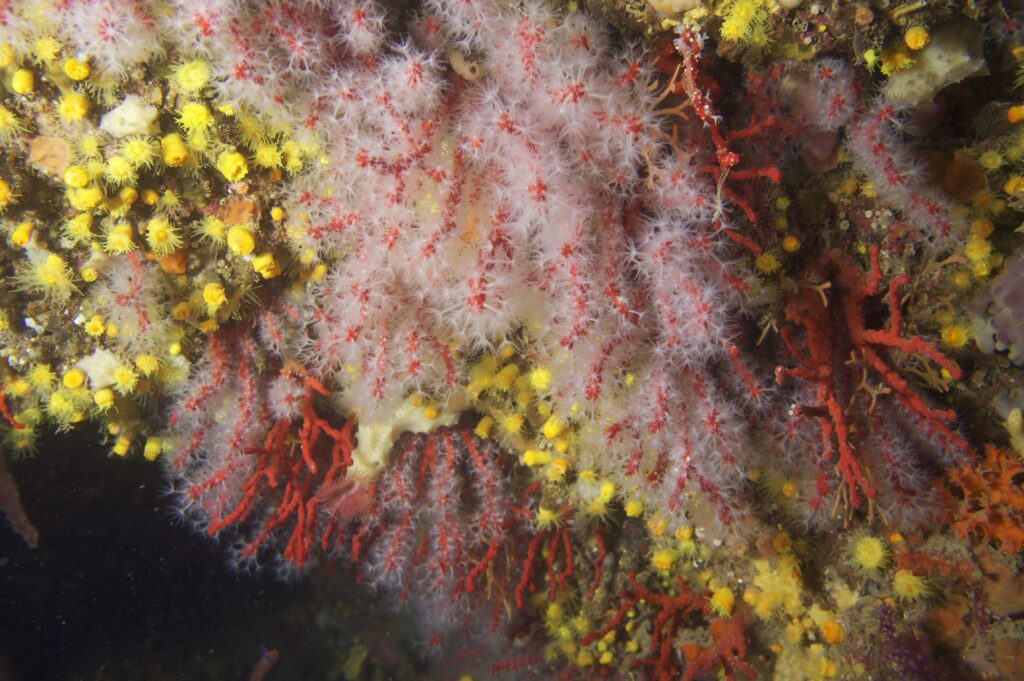
What is the best time to go diving in Tuscany?
Any time of year is perfect for diving, it just depends on what each diver is looking for. The period from the end of spring to autumn, when the water warms up, is good for those who travel with light equipment and prefer to stay at shallower depths, where they encounter schools of fish passing through the seagrass meadows. In autumn and winter the landscape changes, but it does not lose its charm, on the contrary. It is the perfect time to take advantage of the quiet of the low season and go on deeper, exploration dives, among forests of black coral on the sandy seabed inhabited by fascinating creatures.
Follow us on our Facebook!


